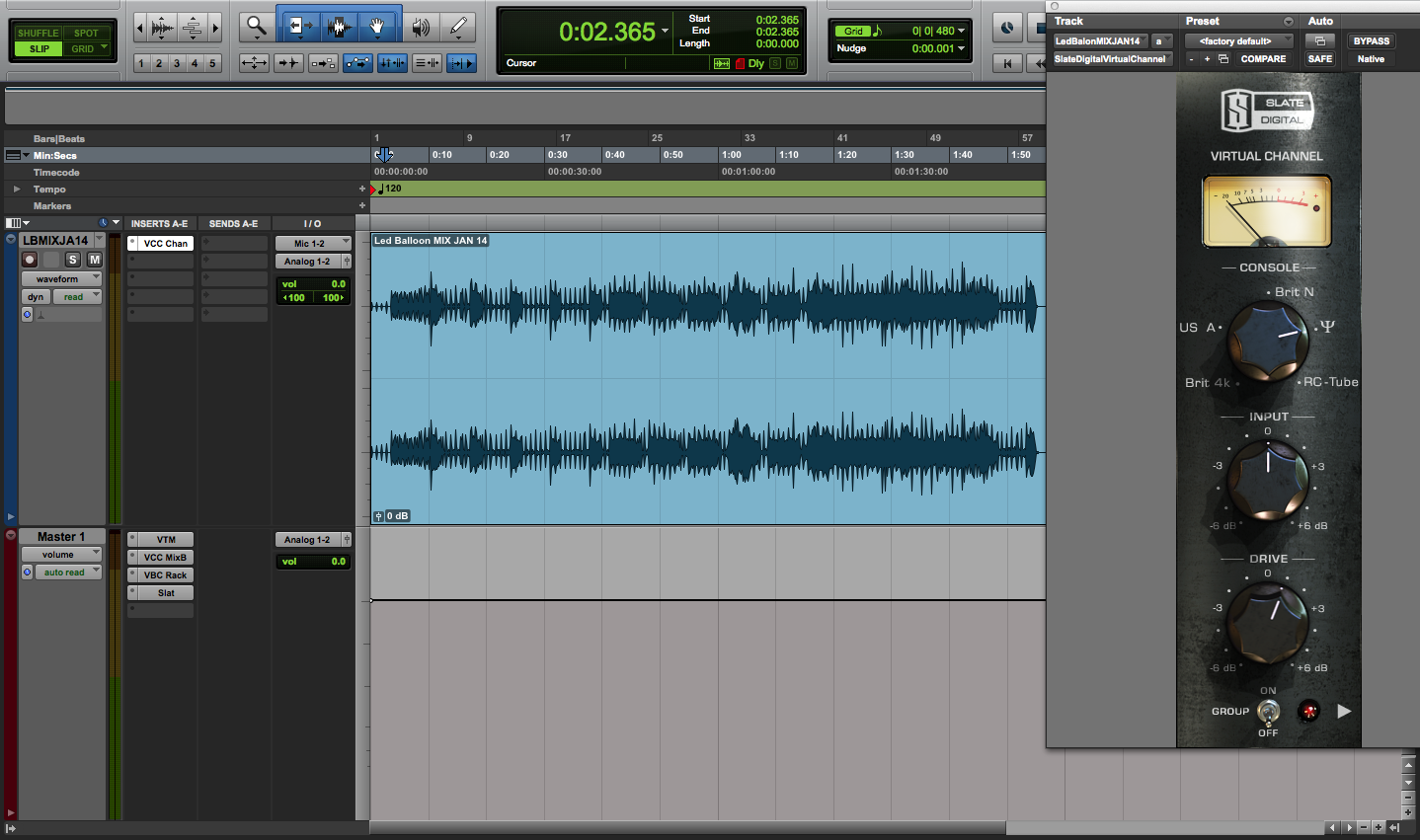In the professional world of audio recording, digital reigns supreme.
Digital recording, editing, mixing and mastering are four discrete pathways in the audio chain and in each case, digital has superseded analogue.
Some might argue that analogue sounds better and probably the majority of audiophiles wouldn't hesitate to agree but the advantages of digital: the flexibility, the relative ease of operation and the cost factor all combine to validate a case for going digital.
However, as bit depths, sampling rates and the overall sophistication of the software have increased, there has been a movement over the last few years to 'model' or digitally emulate the sound of vintage equipment (including hiss!!) and meld that sound with the super clean qualities of digital systems.
The corollary occurs in the fact that with the emergence of LUT's exactly the same thing is happening in digital video… but more on that later.
Below are a series of screenshots displaying some elements of the final processing featuring one of a number of Music College TV 'Genre Studies'.
(This is not a full treatise on mastering but some the techniques used in mastering are covered here).
The 'Genre Studies' feature a range of musical band studies that demonstrate a particular musical style or genre. The piece in question is 'Led Balloon'… a homage to 70's rock styles:
Led Balloon - Stereo Mix
Above is the original mix of the track, it features: drums, bass guitar, lead electric guitar and keyboard (hammond organ)… it appears here in Pro Tools on a stereo audio track.
VCC - Virtual Console Collection

.
On the right is the first plug in to be used in the audio chain. This is the VCC - Virtual Console Collection from
Steven Slate Digital. The intention of this plugin is to emulate the sound of certain 'classic' mixing desks with the aim of capturing that certain something that these desks imparted to the audio flowing through them. There are a choice of five sonically different mixing desks… the selection here is the Trident desk. One of a number of mixing desks associated with the 'Classic Rock' of the 1970's.
VTM - Virtual Tape Machine
The next plugin is placed on the master buss (rather than on the channel strip). Again this is an emulation but this time of the recording medium itself - tape; the plugin is called the VTM - Virtual Tape Machine. The particular characteristic that software designers want to capture is the warmth and soft saturation that real tape imparts. The sound is subtly transformed in a very musical way providing a final gloss to the mix.
VCC - Virtual Console Collection
Next is the master buss version of the VCC (Virtual Console Collection). The selection shown here is the Neve Console which once again is an emulation of a classic 70's mixing console. If this had been selected as the final choice, the bass frequencies would have been given a more pronounced lift but in the end, the choice was an SSL desk which imparted an enhanced stereo image and balance of frequencies.
VBC - Virtual Buss Compressors
The real secret of mastering is to enhance the mix with subtle, incremental steps… simply putting a limiter across the mix buss is not the answer.
This plugin actually creates the most significant difference… the VBC - Virtual Buss Compressors. Not one but three very different types of compression that with significant subtlety lift a mix into new sonic areas. There is an excellent description of the processes involved on the Steven Slate website here:
Virtual-Buss-Compressors.
FG - X Limiter
And finally to complete the chain - a limiter. In this instance very gentle limiting as throughout the process it is important to retain a sense of dynamic and not to squash all life out of the material.
The Result
The audio levels are now at an industry standard. There is still good dynamic range but the mix sounds punchy and full.
So what about the corollary?
Well actually, I think that's a discussion for next time… but a small taster:
Below is a still from one of Ryan's new guitar percussion lessons:
Ungraded
The original footage, shot on a Blackmagic Cinema Camera
Grade 02
Grade 02 features Fuji stock Emualtion
More to follow soon!


























































